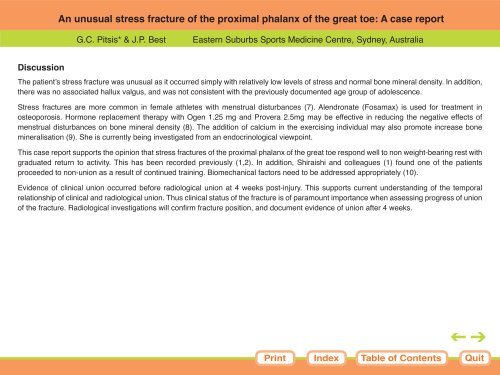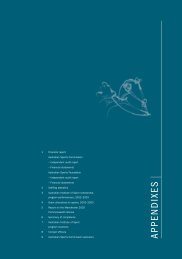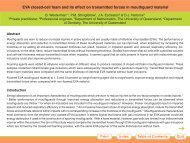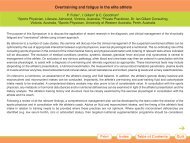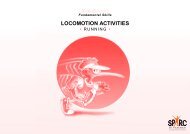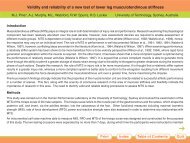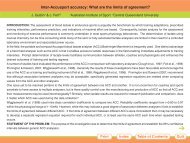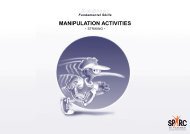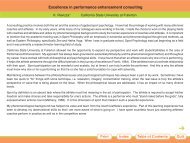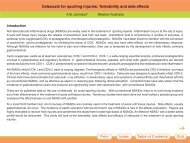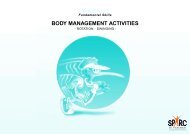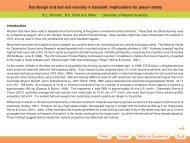An unusual stress fracture of the proximal phalanx of the great toe: A ...
An unusual stress fracture of the proximal phalanx of the great toe: A ...
An unusual stress fracture of the proximal phalanx of the great toe: A ...
Create successful ePaper yourself
Turn your PDF publications into a flip-book with our unique Google optimized e-Paper software.
Discussion<br />
<strong>An</strong> <strong>unusual</strong> <strong>stress</strong> <strong>fracture</strong> <strong>of</strong> <strong>the</strong> <strong>proximal</strong> <strong>phalanx</strong> <strong>of</strong> <strong>the</strong> <strong>great</strong> <strong>toe</strong>: A case report<br />
G.C. Pitsis* & J.P. Best Eastern Suburbs Sports Medicine Centre, Sydney, Australia<br />
The patient’s <strong>stress</strong> <strong>fracture</strong> was <strong>unusual</strong> as it occurred simply with relatively low levels <strong>of</strong> <strong>stress</strong> and normal bone mineral density. In addition,<br />
<strong>the</strong>re was no associated hallux valgus, and was not consistent with <strong>the</strong> previously documented age group <strong>of</strong> adolescence.<br />
Stress <strong>fracture</strong>s are more common in female athletes with menstrual disturbances (7). Alendronate (Fosamax) is used for treatment in<br />
osteoporosis. Hormone replacement <strong>the</strong>rapy with Ogen 1.25 mg and Provera 2.5mg may be effective in reducing <strong>the</strong> negative effects <strong>of</strong><br />
menstrual disturbances on bone mineral density (8). The addition <strong>of</strong> calcium in <strong>the</strong> exercising individual may also promote increase bone<br />
mineralisation (9). She is currently being investigated from an endocrinological viewpoint.<br />
This case report supports <strong>the</strong> opinion that <strong>stress</strong> <strong>fracture</strong>s <strong>of</strong> <strong>the</strong> <strong>proximal</strong> <strong>phalanx</strong> <strong>of</strong> <strong>the</strong> <strong>great</strong> <strong>toe</strong> respond well to non weight-bearing rest with<br />
graduated return to activity. This has been recorded previously (1,2). In addition, Shiraishi and colleagues (1) found one <strong>of</strong> <strong>the</strong> patients<br />
proceeded to non-union as a result <strong>of</strong> continued training. Biomechanical factors need to be addressed appropriately (10).<br />
Evidence <strong>of</strong> clinical union occurred before radiological union at 4 weeks post-injury. This supports current understanding <strong>of</strong> <strong>the</strong> temporal<br />
relationship <strong>of</strong> clinical and radiological union. Thus clinical status <strong>of</strong> <strong>the</strong> <strong>fracture</strong> is <strong>of</strong> paramount importance when assessing progress <strong>of</strong> union<br />
<strong>of</strong> <strong>the</strong> <strong>fracture</strong>. Radiological investigations will confirm <strong>fracture</strong> position, and document evidence <strong>of</strong> union after 4 weeks.<br />
Print<br />
Index<br />
Table <strong>of</strong> Contents<br />
Quit


